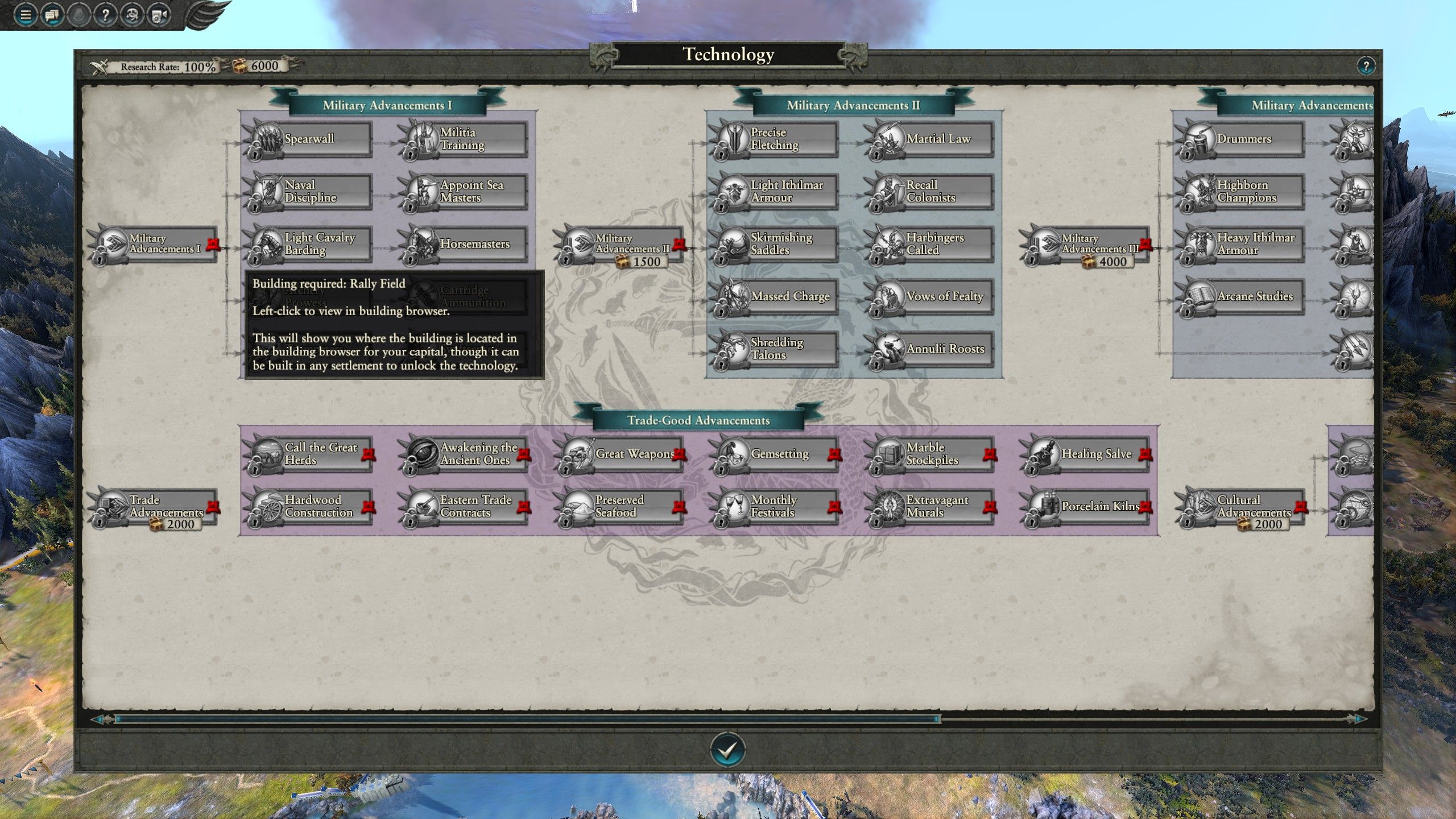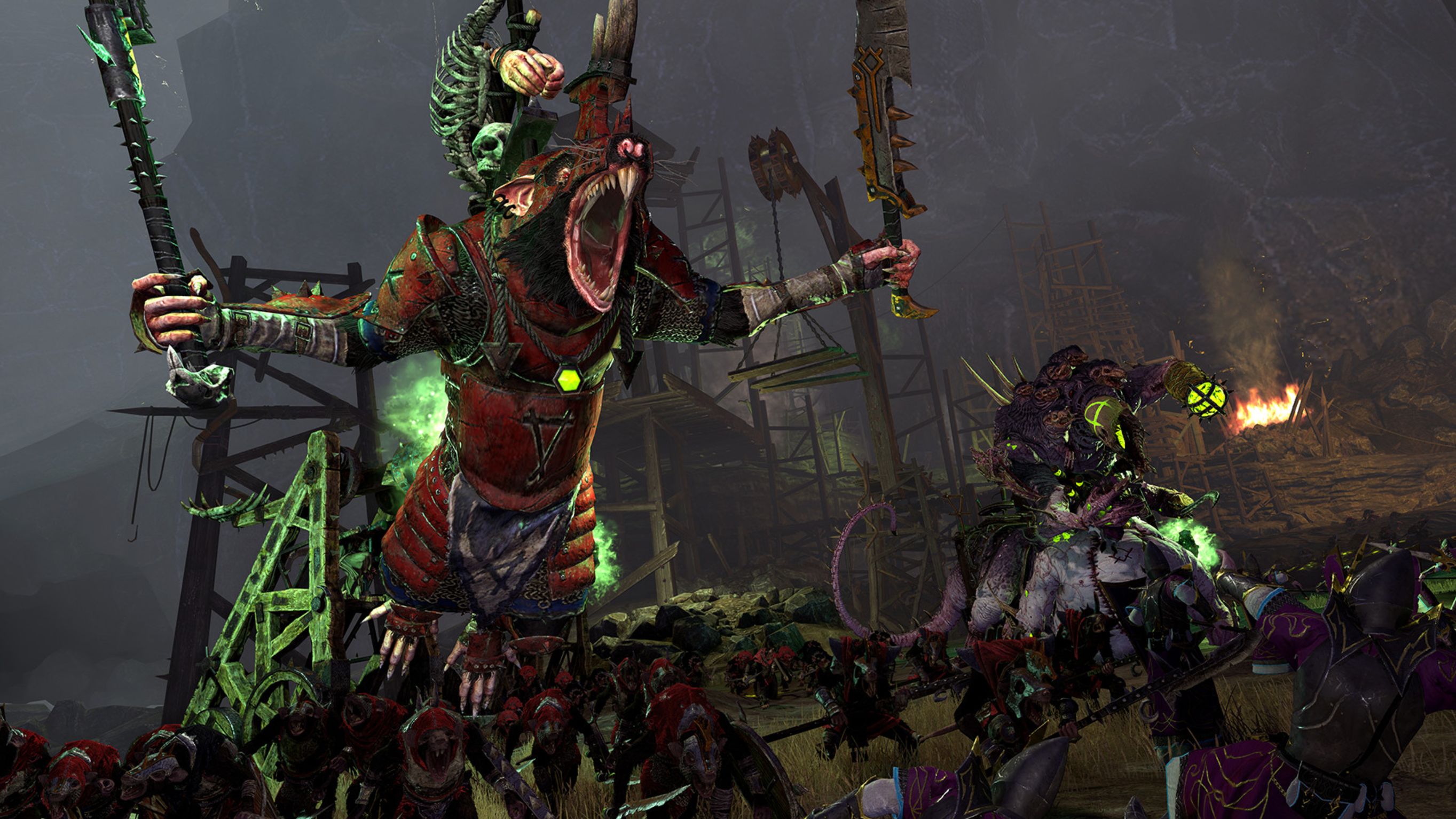Six things I wish I knew before starting a Total War: Warhammer 2 campaign
From good starting positions to thwarting corruption.

Total War: Warhammer 2 is great. The Creative Assembly has elegantly streamlined the game, introduced an excellent new campaign structure and done a tremendous job of realising four exciting factions from the OTT world of Warhammer. We like it so much we gave it 92 in our review.
For new players the game explains itself better than any other Total War to date, through detailed tooltips and sensible campaign introduction tutorials. It is a complicated game, however, and some systems (I'm looking at you, corruption) can pop up and disrupt your campaign out of nowhere. I've addressed a few of these elements below with brand new players in mind.
Learn your army in custom battle

You do need a short winning streak of battles to get a campaign off the ground. If you struggle to take your first province, or do so too slowly, you risk falling behind in the grand race to control the vortex. Total War: Warhammer 2 is forgiving during the opening stretch, but a campaign isn't the best place to learn an army and experiment. Plus, how are you supposed to know what to build if you don't know how the units you're unlocking really function?
So, jump into skirmish against the computer in custom battle mode and get used to your army's units right away. Just how tough are those High Elf spearmen really? Can a dinosaur with a laser cannon on its back tank a hundred clan rats? I have found it useful to focus on a few core units that work efficiently to form the backbone of an army. Then I like to find a few high level units I like so I can later aim for them in the campaign.
There are some cool story scenarios to play too. These are a good way to learn the controls, and they show you what a balanced force can look like. There's no substitute for picking your own units if you're trying to learn a force. A few hours of experimentation in custom games could save you many hours during a campaign.
Look past a campaign's starting difficulty

In typical Total War fashion each campaign has a difficulty rank to let you know how tough that faction's starting position is on the world map. It's tempting to jump into the easiest starting position, but there is more to the choice than this. Though it's wise not to opt for a hard campaign straight away, it's worth bearing in mind each faction's tricks and play style before you choose.
If you play as High Elves in Teclis' "easy" starting position you find yourself in the heart of the High Elf island of Ulthuan. It's a beautiful land of rainbows, huge magical vortexes and fortresses positioned in easily defended mountain passes. As starting positions go, this is as good as it gets. However the High Elves are an elite army that relies on a relatively small number of vulnerable units that can deal a lot of damage. Their research tree is the most complicated of the set. Plus their special ability to manipulate enemies through trade is also more abstract than, say, Skaven, who can bring up units from beneath the earth in corrupted territories, or the Dark Elves, who can spawn enormous black arks to harass distant enemies.
Keep up to date with the most important stories and the best deals, as picked by the PC Gamer team.
If you have played Total War games before then the organised blocks of infantry in a High Elf army will feel nice and familiar, but I would be tempted to recommend the Lord Mazdamundi Lizardmen campaign and even, perhaps controversially, the Squeek Skaven campaign. Mazdamundi's starting position is very friendly to the Lizardmen. Once you've seized your province you can ally with the cheerful human faction south of you and then raid the weak Dark Elf forces to the north. Lizardmen units are more fun than Elves because they have dinosaurs and giant frogs that cast magic. This is a fact even though Jody will fight me over it.
The Skaven Queek campaign is a tough prospect for a newcomer, but it's a lot of fun if you don't mind taking some punishment and want to think like a Skaven warlord. Taking the starting province is dead easy because you just set up in a series of ruins, however you face constant raids from a High Elf island nearby and from treasure-hunting Lizardman fleets. There are a bunch of Skaven clans to the east that will fight hard for the warpstone source in that area of the map. It's a game of scrabbling from settlement to settlement. Raid aggressively to keep your food supplies up and smother enemy territories with corruption. This is the way of the horned rat.
The Dark Elves are interesting too. They get more powerful when more things die in battle, they have cool monsters and Malekith is a powerful general. Sadly, I find Malekith's starting position a bit dull. You're dropped into the frozen North far from the sea, surrounded by independent states and ruins plagued by Skaven. Once you do get onto the ocean Black Arks are amazing. These ominous seaborne fortresses are cities in their own right.
Check which buildings you need for research

Most of Total War: Warhammer's factions need to construct buildings to unlock paths on the technology tree. This does a neat job of tying building, tech and unit production into one interlocking system, and it gives each faction characterful approaches to R&D. Lizardmen—magical demons and masters of the universe—have loads of mystical buildings that unlock short sprints of technology. Skaven instead start learning new tech when they've built a couple of tier-three buildings (though note that you can found a settlement at rank three if you have enough food for a shortcut).
Whatever faction you decide to start with, open up their tech tree on turn one and mouse over the little red icons attached to technologies. These will tell you what you need to build to start researching that discipline. When you know your tech buildings you can plan to leave spaces for them in your provinces. If you don't want to worry about any of this, go with the Dark Elves. They can plunge straight into the research tree with a simple payment. That's sorcerers for you.
Look out for corruption

Chaos and the Skaven infest the lands they occupy, changing the very nature of the Old World to suit their gods. Corruption is displayed as a percentage value in each territory and you may even notice the land changing in appearance as Chaos warps your home into a lava-strewn hellscape.
If a land becomes too corrupted your armies start to die off, public order takes a massive hit, and and you're pretty much screwed. Chaos corruption can spread very aggressively (much more quickly than the first game, it seems) and because wrangling corruption is a slow process, prevention is better than cure.
A territory's info card on the bottom left of the screen gives you a useful breakdown of all of the factors influencing corruption in that region. Your methods for dealing with corruption vary from faction to faction. Look for hero skills and buildings that improve your quotient of untainted land. Note that you can level up the same hero skill multiple times, so you can create heroes dedicated to hoovering up corruption wherever they go. Multiple hero effects stack as well, so if you have a serious corruption problem a reactive cluster of heroes might help.
Of course you might play a faction that enjoys rolling around in corruption, in which case look for buildings and heroes that spread more of the stuff. It's fun to load up Skaven heroes with pestilence and send them raiding in enemy territory where they can steal food and spread rot at the same time.
Chaos invasions become powerful quickly

In Total War: Warhammer 2 the four major factions are performing rituals to influence the roaring vortex at the centre of the map. Every time you successfully perform a ritual Chaos invades your lands. In my experience the first invasion is easy to bat away, but Chaos attacks with much greater power with each ritual performed.
I was caught out in one campaign when I decided to let my garrisons and an army of magically summoned wild dinosaurs defend my lands while my main army was marauding abroad. A collection of rampaging Chaos armies stole away several cities before my mighty Slann returned to crush them. The best defense is a strong economy that allows you to sustain multiple armies, but if you like to gamble you can build defensive structures that grow the garrisons automatically stationed at your cities.
Merge units, and be careful about raising a second army too soon

Unit upkeep costs are a big deal. Raising a second army of noteworthy strength can wipe one or two thousand gold off your incoming gold total per turn. If this puts you into the red then be prepared to disband individual units from your armies to balance your economy. This is especially painful if you're having to disband battle-tested forces that have earned veteran bonuses.
Merging units is an efficient way to cut costs. If you have two half-strength units of clan rats after a battle, consider merging them by clicking one, shift-clicking the other, and then selecting the merge command from the tiny pop-up menu. Now you're only paying for one unit rather than two. You can always hire another unit of clan rats later when you have more cash coming in.
There are lots of ways to make money. The safe way is to build a bunch of money-making buildings and spread them across your empire. If you would rather use those building slots for other things then you can be a pirate instead. To do this plunder nearby lands in raiding stance, defeat enemy armies and extort as much money as you can from the aftermath, and sack cities every so often to empty their vaults. Look out for bonuses in your hero skill trees and technology trees that increase the percentage of gold you get out of combat engagements and plundering settlements.
If you're a charismatic faction like the High Elves, trade can also bring in a lot of cash. Talk to everyone and try to establish as many trade agreements as possible.
That's enough to be getting on with for now. It is still difficult to quickly discern what minor variants on units really do in the game, but the best way to fix this is with experimentation in step one. With a bit of training you'll have control of that vortex in no time.
Part of the UK team, Tom was with PC Gamer at the very beginning of the website's launch—first as a news writer, and then as online editor until his departure in 2020. His specialties are strategy games, action RPGs, hack ‘n slash games, digital card games… basically anything that he can fit on a hard drive. His final boss form is Deckard Cain.


